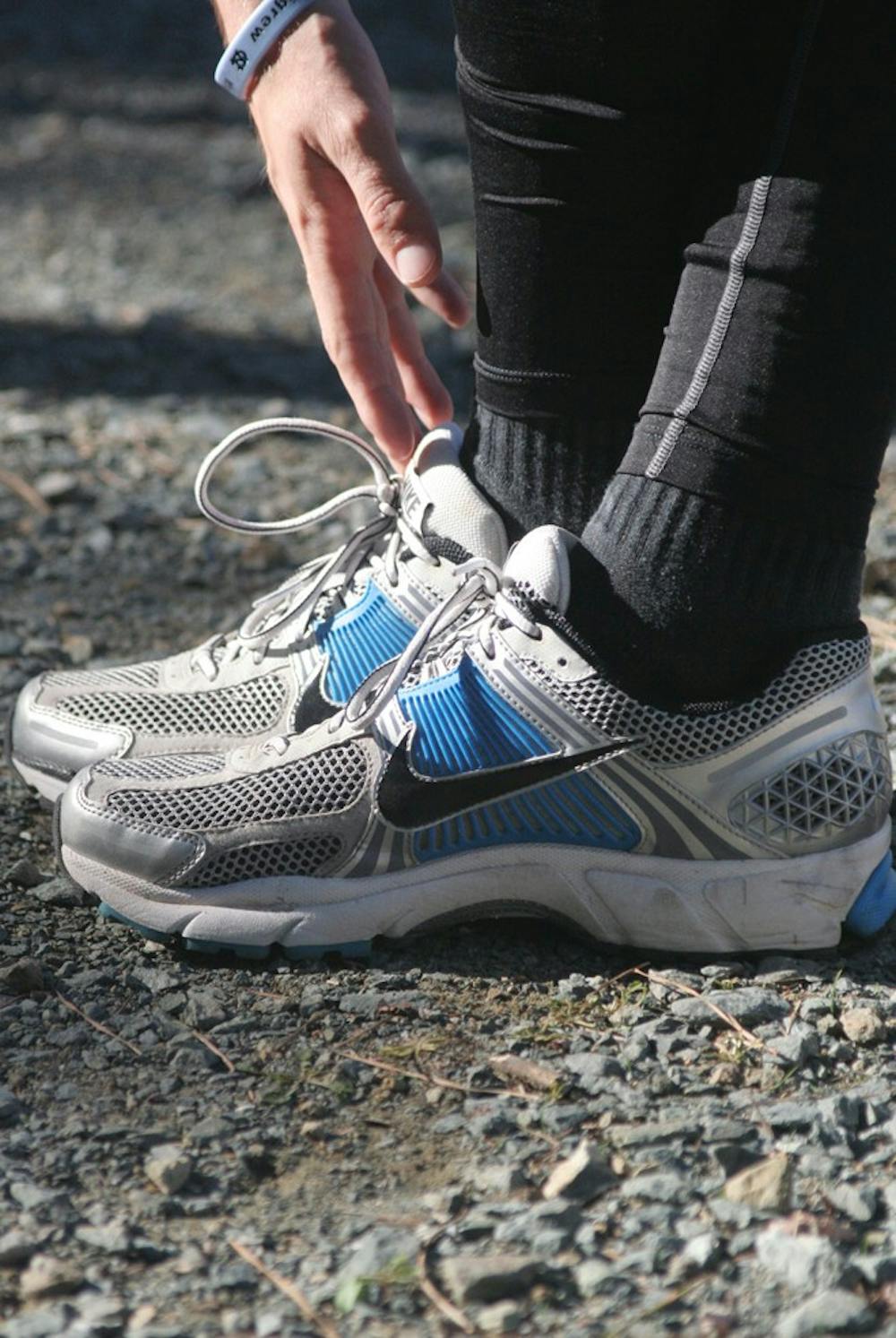Watson, a Nike user himself, stands behind the product. With the variety the corporation provides for the athletes, Watson rarely has to special-order shoes for individuals who don’t care for the prototyped merchandise.
“There’s a different model for everyone,” Watson said. “Nike doesn’t just put their shoes out without a lot of research.”
Freshman Jake Hurysz ran in Adidas in high school until he committed to UNC, knowing the school was Nike-sponsored.
During high school he would buy his own shoes, but now that money isn’t a factor and he’s left to choose among Nike, Nike and Nike, Hurysz has grown comfortable with the athletic giant’s products.
“Now I love my Nikes,” Hurysz said. “I had an injury with my Achilles because of my Adidas a while ago, so I stopped wearing those and haven’t had any problems since I got here and started training.”
Watchempino also had complaints with Adidas. After sustaining a stress fracture in his spine and tendonitis in his left knee, he gave up on the brand and switched to Nike for good — making the transition to UNC as seamless as possible.
The shoe doesn’t do all of the work, though — nor is it completely to blame for injuries.
“Your shoe is there to cushion you,” Watson said. “It’s not a crutch. It’s not an orthopedic device.”
Many of the runners have an invisible secret. Beneath the laces and the swoosh lies the true technology: The inserts.
“Nobody sees the orthotics,” Watchempino said. “But they’re the most important thing to staying healthy. Not so much the shoe.”
Watchempino has been using a specialist in California to get his inserts for the past eight years, mailing them back and forth after getting hooked when he was injured in high school. The inserts — his a combination of hard plastic, leather and cork — are personalized for every runner.
“He took a mold of my feet and then built the orthotic,” he said. “My left leg is a half-inch shorter, so one of my inserts is built up higher and thicker.”
To get the day's news and headlines in your inbox each morning, sign up for our email newsletters.
It’s a multi-step process. After the orthotic is made, the athlete runs in it for a while, feeling for signs of pain, increased pressure or, ideally, total comfort.
“At first, we had plastic where the cork is now, but I started developing calluses,” Watchempino said. “So then we chopped it down and tried the cork.”
Watchempino may be the only runner on the team looking as far as California to perfect his inserts, but his specialist has helped runners like UNC alumna and Olympic bronze medalist Shalane Flanagan in the past, he said.
The orthotics, usually prescribed and incredibly personalized, prevent the runners from getting shin splints, blisters and other injuries casual joggers might experience.
The runners use other tricks, as well. Compression socks, which help circulate blood in the foot and calf, were a new development for the teams this year.
Watson provided both the men’s and women’s teams with these new socks this season, but several runners, like Lucena, prefer to stick with their good old-fashioned socks on training days. On meet days, most of the athletes go barefoot inside their racing spikes.
“Our feet are our tools,” Lucena said. “They are fragile, and though runners may have the grossest feet with the black toenails and blood blisters and all, we need them to be well-cared for.”
Contact the Sports Editor at sports@unc.edu.



